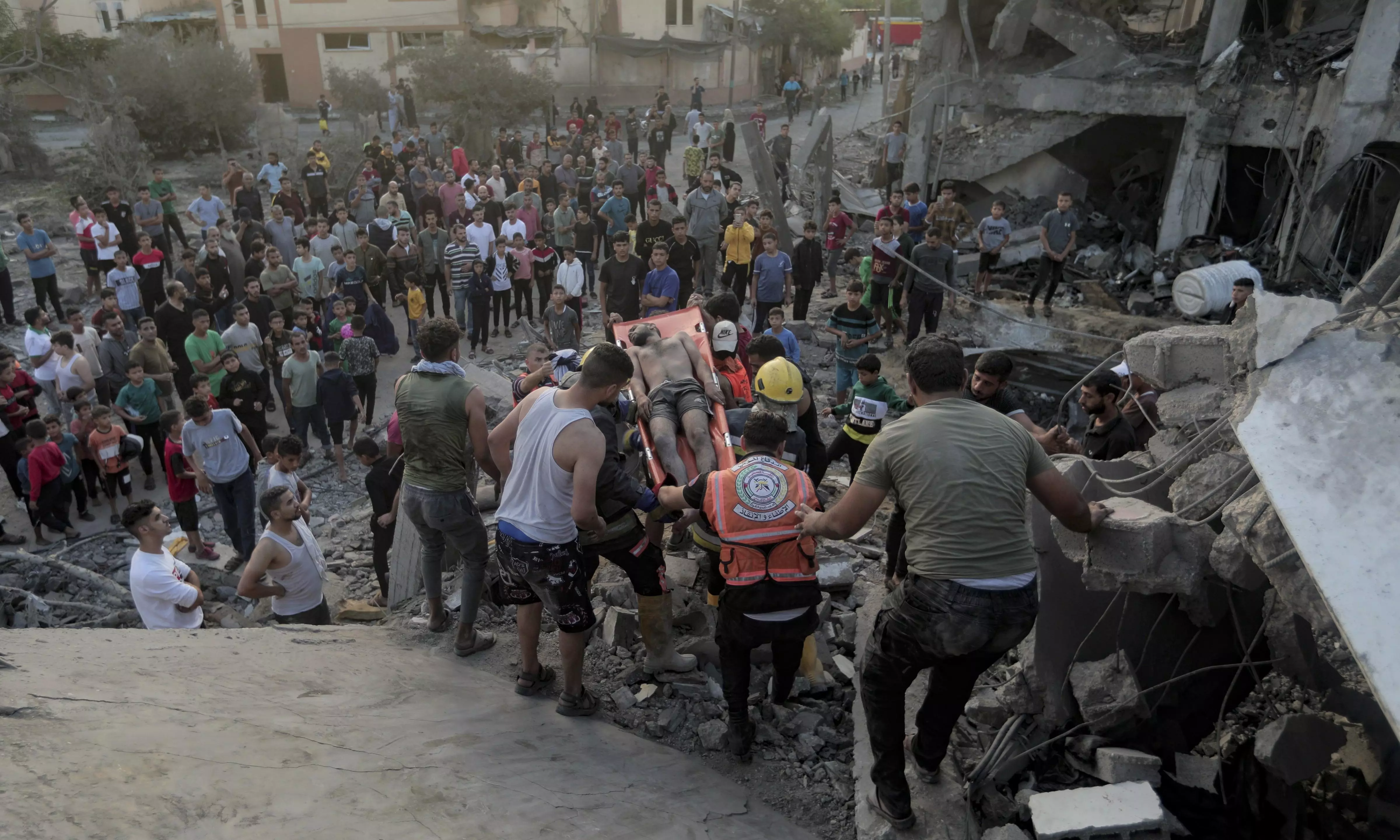
Gaza's 16-year blockade: Impact of 'complete siege' and invasion on vital supplies
The situation in Gaza is dire after 56 years of occupation and a 16-year blockade. It is now under a "complete siege."

After 56 years of occupation and a 16-year blockade, the Gaza Strip (Gaza) is now subjected to what Israel’s defence minister described as a “complete siege”. Water, food, energy and fuel supplies have been severed as further retaliation for Hamas’s attacks.
Gaza’s estimated 2.3 million citizens are used to struggle. And as a political ecologist researching food sovereignty in Gaza City and Khan Yunis, a city in southern Gaza, with local specialists, I’ve seen how the food system has already been stretched to breaking point.
Gaza’s single power station has now ceased to function, as the current dark night skies – save for explosions – bear witness. Without fuel or electricity, farmers will be unable to pump water to irrigate crops, or to process and safely store food.
Before the latest hostilities, 70% of Gaza’s households were already classified as “food insecure”, unable to afford their daily requirements. Two-thirds of people are refugees, reliant on UN aid. As a captive market, most of what is imported comes from Israel. Palestine is Israel’s third largest export market after the US and China.
Food and farming have long been complicated by repeated airstrikes, occupation and blockade. In good years, Gaza remains self-sufficient in fruit and vegetables, much produced in polytunnels and greenhouses.
According to data I obtained from the Palestinian Ministry of Agriculture, in 2021 Israeli exports to Gaza included seeds, over a million litres of pesticides and herbicides, and 4.5 million litres of fertiliser. Nitrates from this fertiliser and treated wastewater applied to farmland leach into and pollute groundwater, doing long-term damage to Gaza’s agroecosystems.
This dependency is compounded by a third of Gaza’s farmland being in no-go zones along the border, resulting in low cereal production and availability of animal protein. Most animal products came from (or through) Egypt, via the Rafah crossing, which has been a vital lifeline and was closed at the time of writing.
Small family farms and more intensive commercial farms still provide a source of livelihood for a significant proportion of Gaza’s population. Many home gardens, too, are used for food production, either for family consumption, sharing or bartering to ameliorate the stresses of blockade.
But as families now seek shelter from Israeli bombardment, the harvesting that takes place at this time of year will have come to a halt. Essential crops will spoil, and winter crops needing irrigation will perish.
Water:
Israel controls all water resources across Palestine. Mekorot, Israel’s national water company, extracts water from the coastal aquifer that lies beneath bedrock along the coast of Gaza and Israel, to irrigate Israeli farms. It then pipes and sells water into the Gaza Strip. This supply has now been cut off.
What is left comes from the aquifer, or groundwater polluted by untreated wastewater and nitrates. Over-exploitation of the aquifer, due to demands from Gaza’s population and Israel’s irrigation, has resulted in seawater intrusion and salinity levels so high that it is now considered unfit for human consumption.
Without fuel for pumps, no water extraction is possible. And the municipal desalination plant that supplied Gaza with 15% of its water has ceased to function.
Elsewhere, repairs of ageing and damaged infrastructure from previous bombardments have consistently been hampered by the blockade, affecting water pumping, desalination plants and sewage treatment.
In 2008, strikes on Gaza’s largest sewage treatment plant resulted in 100,000 cubic metres of sewage being released into homes and farmland. Further strikes in 2018 resulted in discharges of raw waste into the Mediterranean threatening the fish stocks Palestinians depend upon.
Just a few weeks ago, Gaza had eight wastewater pumping stations for sewage treatment, requiring 55,000 litres of fuel a month. An official I know at the mayor’s office tells me two of these were destroyed on the first day of Israel’s airstrikes. Without fuel to operate the ones that remain, a repeat of 2008 is already unfolding, with grave implications for ecosystem and human health.
Invasion:
It is impossible to predict how disastrous a ground invasion would be. Over the past 15 years, damage to Gaza’s infrastructure is thought to amount to US$5 billion (£4.1 billion) across four previous wars.
After the 22-day invasion from December 2008 to January 2009, the UN documented wide-scale damage to fields, vegetable crops, orchards, livestock, wells, hatcheries, beehives, greenhouses and irrigation systems. Over 35,750 cattle, sheep and goats and more than one million poultry were killed.
The UN mission stated that the destruction had degraded land, by “mechanical ripping and removal of trees, shrubs and crops”, and that the “passage of heavy tracked vehicles has compacted the soil”, hampering future cultivation.
With each war, Gaza’s dependence on Israeli imports of water, energy, fuel, food and agricultural inputs only increases. Meanwhile, Israel’s economy has become intricately bound to its illegal occupation of Palestine, to the tune of exports worth US$4.16 billion in 2021, creating a perverse mutual dependence.
A complete siege on Gaza is arguably a contravention of international human rights law which states that Palestinians must be “supplied with the food, medicine and other basic needs to allow the population to live under adequate material conditions”.
The situation for Gazans is dire. Sheltering from military strikes, farmers unable to harvest or distribute food, added to blocks on water, food and energy, all in Gaza are acutely vulnerable to disease and malnutrition.
It is eight years since the UN predicted that Gaza would soon become “uninhabitable”. It said that years of blockade had “shattered” Gaza’s ability to provide for its people, “ravaged its already debilitated infrastructure” and “accelerated de-development”. A total siege will go a long way towards turning that prediction into a gruesome reality.

